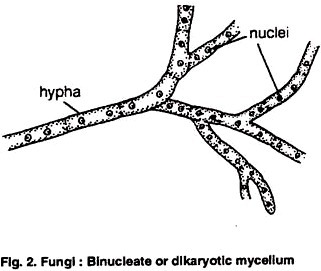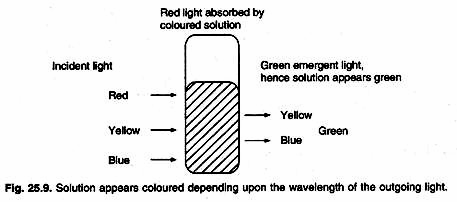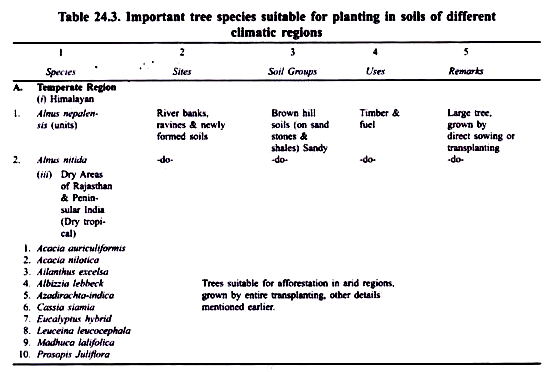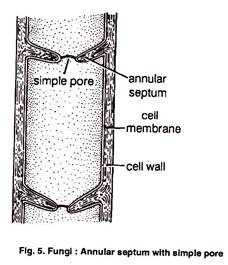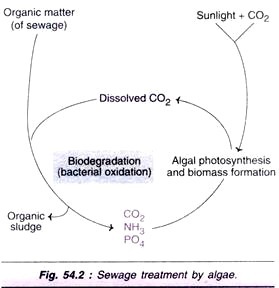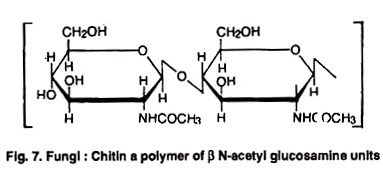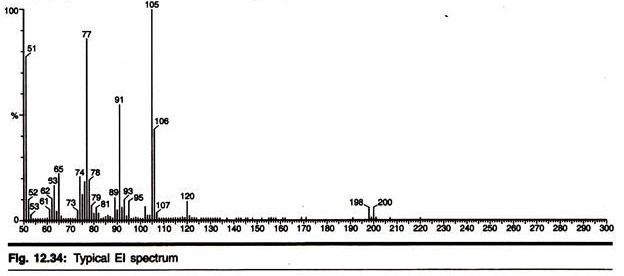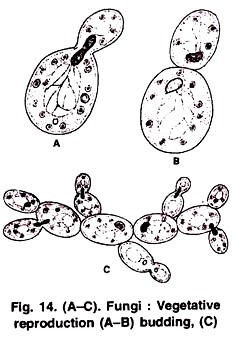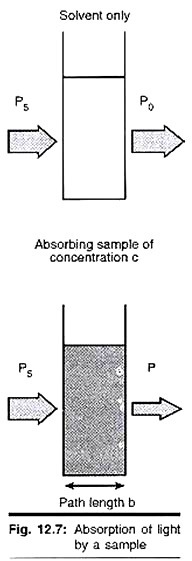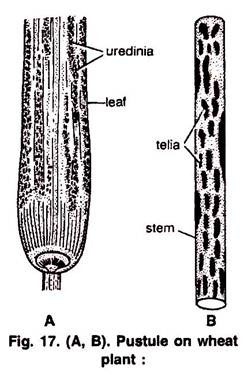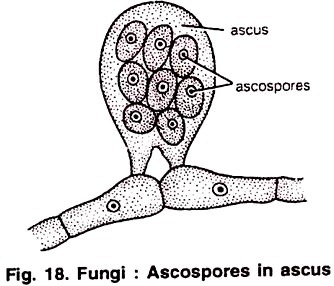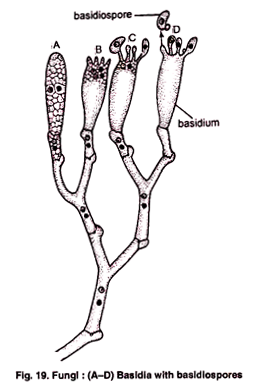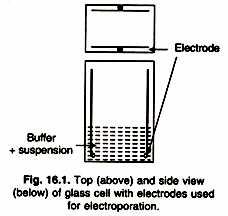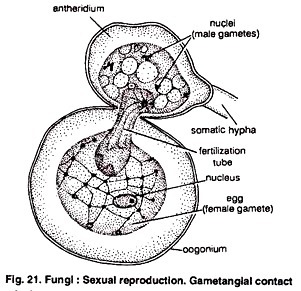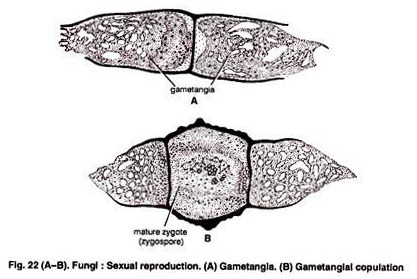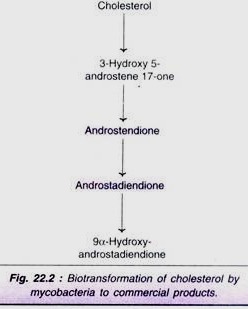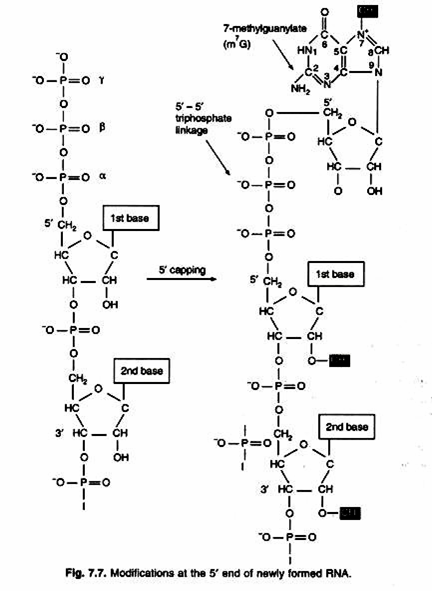In this essay we will discuss about Fungi. After reading this essay you will learn about: 1. Meaning of Fungi 2. Classification of Fungi 3. Criteria used in Classification 4. Features of Important Classes 5. Thallus Organization 6. Nutrition 7. Reproduction 8. Useful Activities 9. Harmful Activities 10. Life Cycle Patterns.
Contents:
- Essay on the Meaning of Fungi
- Essay on the Classification of Fungi
- Essay on the Criteria used in Fungal Classification
- Essay on the Salient Features of Important Classes of Fungi
- Essay on the Thallus Organization of Fungi
- Essay on the Nutrition in Fungi
- Essay on the Reproduction in Fungi
- Essay on the Useful Activities of Fungi
- Essay on the Harmful Activities of Fungi
- Essay on the Life Cycle Patterns in Fungi
Contents
- Essay # 1. Meaning of Fungi:
- Essay # 2. Classification of Fungi:
- Essay # 3. Criteria Used in Fungal Classification:
- Essay # 4. Salient Features of Important Classes of Fungi:
- Essay # 5. Thallus Organization in Fungi:
- Essay # 6. Nutrition in Fungi:
- Essay # 7. Reproduction in Fungi:
- Essay # 8. Useful Activities of Fungi:
- Essay # 9. Harmful Activities of Fungi:
- Essay # 10. Life-Cycle Patterns in Fungi:
Essay # 1. Meaning of Fungi:
Fungus (pl. fungi) is a Latin word which means mushrooms. Fungi are nucleated, spore bearing, achlorophyllous organisms which generally reproduce sexually and asexually, and whose usually filamentous branched somatic structures are typically surrounded by cell walls containing cellulose or chitin, or both (Alexopoulos, 1952).
In simpler words it may also be defined as “non-green, nucleated thallophytes”. The common examples of fungi are the yeasts, molds, mushrooms, polypore’s, puff balls, rusts and smuts. The branch of botany that deals with the study of fungi is known as mycology (Gr. mykes = mushroom + logos = discourse) and the person knowing fungi is known as mycologist.
The Italian botanist Pier’ Antonio Micheli deserves the honor of being called ‘Founder of the science of mycology’ because he was the first person to give somatic description of fungi in his book Nova plant-arum Genera published in 1729. Anton De Bary (1831-1888) is called the ‘father of modern mycology’. At present about 5100 genera and more than 50,000 species of fungi are known.
Essay # 2. Classification of Fungi:
Taxonomy has a dual purpose—first to name an organism according to some internationally accepted system and then to indicate the relationship of the particular organism with other living organisms. As our knowledge increases, the classification changes.
Even the name of organisms do not always remain stable because as we learn new facts about them, it often becomes necessary to alter our concept of their relationship which in turn demands reclassification and a change of name. The classification of fungi is still in a state of flux. A stable or ideal scheme is yet to be proposed.
The grouping or categories used in the classification of fungi are as follows:
The kingdom is the largest of the categories and includes many divisions: each division may include many classes and so on down to the species which is the unit of classification. Each of these categories may be divided into subgroups, subdivisions, subclasses, suborders, if necessary. Species are sometimes broke-down into varieties, biological strains and physiological or cultured races.
In accordance with the recommendations of the committee on International rules of Botanical Nomenclature:
(a) The name of divisions of fungi should end in—mycota.
(b) The name of subdivisions should end in—mycotina.
(c) The name of classes should end in—mycetes.
(d) The name of subclasses should end in—mycetideae.
(e) The name of orders should end in—ales.
(f) The name of families should end in a suffix—aceae.
Genera and species have no standard endings. The name of an organism is binomial. It is composed to parts―the first is noun designating the genus in which the organism has been classified, and the second is often an adjective describing the noun which denotes the species. The first letter of each generic name is always a capital.
Classification Proposed by Linnaeus:
Linnaeus (1753) in his Species Plantarum divided the plant kingdom into 25 classes, which include a class Crytogamia dealing with all plants with concealed reproductive organs. Cryptogams were further divided into thallophyta, bryophyte and pteridophyta by Eichler (1886). He further subdivided thallophyta into algae and fungi. The fungi comprised of Schizomycetes, Eumycetes and Lichens.
Goebel (1887) divided fungi into 3 classes on the basis of their reproductive organs:
Class 1. Fission fungi (bacteria),
Class 2. Sprouting fungi (yeasts),
Class 3. Spawn fungi (including fungi with hyphal growth).
Gwynne-Vaughan and Barnes (1926) in their book “The fungi” proposed the classification for fungi.
They did not regard myxomycetes as fungi. They divided the fungi into four classes:
Class 1. Phycomycetes:
Mycelium profusely branched, un-septate, poorly developed or absent.
Class 2. Ascomycetes:
Mycelium septate, branched, conidia exogenous, basipetal or acropetal, aspospores produced in asci.
Class 3. Basidiomycetes:
Mycelium septate, branched, basidia produce basidiospores.
Class 4. Deuteromycetes:
Mycelium septate, branched, no ascospores or basidiospores. On the basis of haploid and diploid phases of their life cycle, structures of the thallus and fructification,
Gaumann and Dodge (1928) divided fungi into four classes:
Class 1. Archimycetes:
Diploid stage is represented by zygote, thallus naked.
Class 2. Phycomycetes:
Thallus with distinct cell wall, diploid stage is represented by zygote.
Class 3. Ascomycetes:
Dikaryotic mycelium, meiosis takes place in asci.
Class 4. Basidiomycetes:
Fruiting body is basidiocarp. Basidiospores develop exogenously on basidia.
Tippo (1942) treated the division thallophyta as a sub-kingdom and he divided it into ten phyla. The first seven belong to algae and last three are those of fungi. The last phylum Eumycophyta comprises of four classes viz. Phycomycetes, Ascomycetes, Basidiomycetes and Deuteromycetes.
In 1950, Bessey proposed a classification of fungi which was based largely on the reproductive structures. He considered slime molds (the myxomycetes) as animals and called them Mycetozoa. All other fungi were considered by him as True fungi.
He divided the true fungi into lower fungi and higher fungi:
1. Lower fungi:
Only one class.Phycomycetes.
2. Higher fungi (Phylum-Capromyceteae):
Fruiting bodies are formed—divided into 3 classes:
Class 1. Ascomyceteae:
Fruiting body ascus.
Class 2. Basidiomyceteae:
Fruiting body basidium.
Class 3. Fungi imperfecti:
Sexual reproduction stage not known.
Martin (1961) divided Eumycetes (true fungi) into 3 classes and two form classes (Lichens and Fungi imperfecti).
His classification is as follows:
Class 1. Phycomycetes:
Plant body consists aseptate mycelium.
Form class 2 Lichens:
Class 3. Ascomycetes;
Mycelium septate, presence of ascospores.
Class 4. Basidiomycetes;
Mycelium septate, Basidiospores produced exogenously.
Form class 5. Fungi Imperfecti:
Mycelium septate, reproduction takes place only by conidia.
Classification Proposed By Alexopoulos:
Alexopoulos (1962, 1968) treated Fungi as a separate kingdom, Kingdom Fungi and placed in a separate division Mycota.
He proposed the following classification of fungi:
1. Division Mycota:
Fungi with true nuclei, having nuclear membrane, cell wall contain chitin or cellulose, reproduction sexual or asexual. Division Mycota was divided into two sub-divisions.
(A) Sub-division—Myxomycotina (wall-less forms);
Amoeboid or animal like bodies, cell wall absent, plant body is in the form of naked protoplast known as Plasmodium, consist only one class.
Class—Myxomycetes;
Vegetative phase is a free living Plasmodium.
(B) Sub-division—Eumycotina:
True fungi. It has been divided into eight classes:
Class 1. Chytridiomycetes;
Flagellum posterior, whiplash type.
Class 2. Hyphochytridiomycetes:
Flagellum anterior, tinsel type.
Class 3. Oomycetes;
Motile cells biflagellate, flagella nearly equal, one whiplash and the other tinsel type, reproduction asexually by means of zoospores, mycelium well developed and multinucleate.
Class 4. Plasmodiophoromycetes:
Two anterior flagella of unequal size, both whiplash type, parasite fungi.
Class 5. Zygomycetes:
Motile cells absent, mycelium well developed and aseptate (coenocytic), sexual reproduction by the fusion of two usually equal gametangia and it results in the formation of zygospore.
Class 6. Trichomycetes:
Present in digestive tract or the external cuticle of living arthropods, simple or branched filamentous coenocytic thallus.
Class 7. Ascomycetes:
Mycelium septate, spores resulting from karyogamy and meiosis are borne in asci.
Class 8. Basidiomycetes:
Mycelium septate, spores resulting from karyogamy and meiosis are borne on basidia.
Form-class. Deuteromycetes:
Hyphae septate, sexual reproduction absent.
Classification Proposed By Ainsworth:
Ainsworth (1966) treated fungi as a separate kingdom (Fungal Kingdom) and included all fungi in it. He called it as kingdom—MYCOTA.
He classified kingdom— Mycota into two divisions:
(A) Division.Myxomycota:
Slime molds or plasmodial forms.
It is divided into four classes:
Class 1. Acrasiomycetes.
Class 2. Hydromyxomycetes.
Class 3. Myxomycetes.
Class 4. Plasmodiophoromycetes.
(B) Division. EUMYCOTA.(True fungi):
It contains following five sub-divisions:
(a) Sub-division. Mastigomycotina:
Fungi having flagellated zoospores and gametes, coenocytic hyphae, divided into three classes:
Class 1. Chytridiomycetes:
Zoospores with a single posterior whiplash flagellum and a conspicuous nuclear cap.
Class 2. Hyphochytridiomycetes:
Zoospores with a single anterior tinsel type of flagellum.
Class 3. Oomycetes:
Zoospores laterally biflagellate, flagella of equal size, one whiplash and the other of tinsel type.Sometimes anteriorly biflagellate.
(b) Sub-division. Zygomycotina:
Coenocytic mycelium, production of aplanospores and zygospores, presence of chitin in cell wall, divided into two classes:
Class 1. Zygomycetes;
Saprophytic or parasitic, asexual reproduction by spores or conidia.
Class 2. Trichomycetes:
Fungi living in the alimentary canal of the orthopods, intracellular parasites.
(c) Sub-division. Ascomycotina:
Presence of septate mycelium and asci, production of a fruiting body, absence of flagellated structures, divided into six classes:
Class 1. Hemiascomycetes:
Asci naked, no ascogenous hyphae, no ascocarp.
Class 2. Loculoascomycetes:
Asci binucleate, ascocarp formed in locules or cavities in stroma formed by fungal hyphal aggregation.
Class 3. Plectomvcetes:
Uninucleate typically globose asci and borne at various levels mostly in a cleistothecium (not in a hymenium). Asci are evanescent i.e., dehice when the ascospores are mature.
Class 4. Laboulbeniomycetes:
Specialized ecto-parasities of insects, the thallus consists of a foot cell (anchored in the exoskeleton of the host) and a filament of cells which forms conidia. Asci are formed in perithecia which are deliquescent.
Class 5. Pyrenomycetes:
Asci uninucleate, cylindrical, persistent, arranged in a hymenial layer in cleistothecium or perithecium.
Class 6. Discomycetes:
Cylindrical asci are arranged in a hymenium and borne in apothecia.
(d) Sub-division. Basidiomycotina:
Presence of dolipore septum, dikaryophase clamp connections and basidia. Sexually produced spores are basidiospores formed exogenously on basidia; divided into three classes:
Class 1. Teliomycetes:
Basidiocarp lacking and replaced by teliospores, grouped in sori or scattered within the host tissue, parasitic on vascular plants.
Class 2. Hymenomycetes:
Basidiocarp usually well developed, basidia typically organised in a hymenium, basidiospores ballistospores, saprohytic or rarely parasitic, hymenium present.
Class 3. Gasteromycetes:
Basidium not involved in the discharge of spores, basidiocarp angiocarpous, basidiospores are not ballistospores.
(e) Sub-division. Deuteromycotina:
Septate mycelium, sexual reproduction or perfect stage absent, divided into three classes:
Class 1. Blastomycetes:
True mycelium absent or poorly developed, budding cells (yeast like cells) with or without pseudomycelium.
Class 2. Hyphomycetes:
Mycelium well developed, sterile or bearing spores directly on special branch (sporophores).
Class 3. Coelomycetes:
Spores formed in pycnidia or acervuli.
Essay # 3. Criteria Used in Fungal Classification:
Linnaeus (1753), Persoon (1801), De Bary (1866), Saccardo (1899), Gwynne-Vaughan and Barnes(1926), classified the fungi on the basis of their morphology. Later on Tippo (1942), Bessey (1950), Gaumanr and Dodge (1952), Martin (1961), Alexopoulos (1962) and
Ainsworth (1966, 73) classified the fungi on t basis of following important characters:
1. Thallus organization and structure.
2. Colour.
3. Shape.
4. Food habits.
5. Cell wall composition.
6. Separation of spores.
7. Flagellation.
8. Sexual reproduction and asexual reproduction.
9. Life cycle.
This criterion is called Classical Criterion. However, Tyrell and Hall (1969) classified fungi on basis of cell wall chemistry.
Now-a-days fungi can be classified by using the following biochemical criteria:
1. Call wall composition.
2. Type of amino acids.
3. Composition of DNA base.
4. Proteins.
5. Biosynthetic pathways. This criterion is called Potential Criteria.
Essay # 4. Salient Features of Important Classes of Fungi:
The important classes of true fungi are the Chytridiomycetes, Oomycetes, Zygomycetes, Ascomycei Basidiomycetes and Deuteromycetes (according to Alexopoulos, 1962).
Their respective salient features as follows:
Class—Chytridiomycetes:
1. The members of this class are usually aquatic but some live in moist soil.
2. Most of the members are parasitic on algae. However, some members have also parasitized small water animals and seed plants.
3. The thallus is coenocytic, holocarpic or eucarpic or filamentous.
4. The cell wall is made up of chitin (a polymer of N-acetyl glucosamine).
5. All the members of this class produce motile cells (zoospores or gametes), each equipped with a single posterior, whiplash flagellum.
6. Some members of this class (e.g., Allomyces) exhibit a true alternation of generation.
7. The important member of this class is Synchytriwn endobioticum. It causes the important disease Black wart of potato.
Class—Oomycetes:
1. The members of this class are characterized by oogamous sexual reproduction.
2. The members of this group exhibit progressive evolution from aquatic to land habitat. Some members of this class are aquatic, others are terrestrial and still others live in association with terrestrial seed plants.
3. Biologically the members are aquatic saprophytes or parasites. Some members are terrestrial facultative to obligate parasites.
4. The thallus may be unicellular or filamentous. The filamentous forms are coenocytic.
5. The chief component of the cell wall is cellulose.
6. This class is an assemblage of unique fungi in possessing a diploid thallus and meiosis occurs before the formation of gametes.
7. Asexual reproduction takes place by bi-flagellated zoospores. The zoospores are kidney shaped or pear shaped having two flagella. One of the flagellum is of tinsel type and the other of whiplash type.
8. Important diseases caused by the members of the class are mildews, blights (late blight of potato caused by Phytophthora infestans) and white rust (white rust of crucifers caused by Albugo Candida) of crop plants.
Class—Zygomycetes:
1. This class includes about 70 genera and 450 species. The members are terrestrial in this class. They live in soil, on dung or on decaying plant and animal matter.
2. Biologically the members are saprophytic but some are parasitic on plants, insects and soil animals (e.g., Amoeba and nematodes). Some members attack the human body causing the disease mucormycosis.
3. The thallus is coencocytic and filamentous.
4. The cell walls are chiefly composed of fungal chitin, cellulose may also be present along with it.
5. The most characteristic feature of zygomycetes, is the complete absence of motile (flagellate) sexual or asexual cells.
6. Asexual reproduction takes place by means of non-motile sporangiospores produced in large number within terminal sporangia.
7. Chlamydospores are present.
8. Sexual reproduction takes place by gametangial copulation. The gametangia of equal or unequal size unite to form the resting spore called zygospore.
9. Zygospore on germination produces a hypha which bears a terminal sporangium.
10. Economically the members of this class are very important. They are employed in industry to produce organic acids like oxalic acid, lactic acid and fumaric acid.
Class—Ascomycetes:
1. Generally the members of this class are terrestrial. Some, however, are marine.
2. Terrestrial members are saprophytic as well as parasitic. The saprophytic members grow on soil rich in humus, decaying vegetable or animal matter, on dung, food stuffs and rotting logs. Parasitic members attack both plants and animals including man.
3. The thallus may be unicellular (e.g., Yeast) while others are filamentous having septate mycelium with uninucleate or multinucleate cells.
4. Component of cell wall is chitin.
5. Asexual reproduction takes place by fission, budding, fragmentation, arthrospores, chlamydospores or conidia, according to species and environmental conditions.
6. Commonly called as sac fungi on account of the presence a sac-like structure termed as the ascus. This ascus is the product of sexual reproduction.
7. The ascus contains a definite number of spores called the ascospores.
8. Motile phase is completely absent in the sexual and asexual reproduction.
9. Origin of dikaryophase takes place in life cycle.
10. Members are economically important. They are employed in agriculture, medicines and various industries.
11. Important diseases caused by the members of this class are apple scab, powdery mildew of grapes and peaches etc.
Class—Basidiomycetes:
1. The members of this class are characterized by the exogenous production of spores termed as basidiospores.
2. Generally the members of this class are terrestrial. Some, however, grow on logs and tree stumps.
3. Biologically the members are parasites (rusts and smuts) as well as saprophytes.
4. The vegetative mycelium is well developed, septate and is of three different types—primary, secondary and tertiary.
5. Septal pore in this class is complex. It is dolipore type.
6. Clamp connections are present.
7. Motile cells are absent in life cycle.
8. Asexual reproduction is by conidia and chlamydospores.
9. Sex organs are absent in this class but monokaryotic hyphal cells or oidia etc. act as sexual cells.
10. The characteristic reproductive organ of this class is basidium. In it both karyogamy and meiosis take place.
11. Some members cause very serious diseases of plants like rusts and smuts (e.g., Puccinia graminis tritici causes black rust of wheat; Ustilago tritici causes loose smut of wheat).
Class—Deuteromycetes:
1. This class includes only those members of fungi in which asexual or imperfect stage is known. The sexual or the perfect stage is unknown.
2. Biologically the members are saprophytes as well as parasites.
3. The vegetative mycelium is septate and profusely branched.
4. Some of the members of this class resemble with members of Ascomycetes and a few resemble with Basidiomycetes in structure and reproduction.
5. Para-sexual cycle (sometimes nuclear fusion occurs followed by reduction division) has been observed in some members of this class.
6. Many members cause serious diseases of plants e.g., early blight of potato caused by Alternaria solani and red rot of sugarcane caused by Colletotrichum falcatum.
Essay # 5. Thallus Organization in Fungi:
1. In fungi body is gametophytic and thalloid (i.e., cannot be differentiated into root, stem and leave). It may be unicellular (e.g., Synchytrium) or filamentous. Yeasts are unicellular or acellular. At times they form pseudo mycelium by aggregation of daughter cells in chain.
Some fungi are dimorphic and exist both in unicellular and hyphal form, e.g., Blastomyces dermatitidis, Candida albicans. Majority of the fungi have filament like structures called hyphae (sing. hypha, Gr. hypha = web). A mass of loosely interwoven hyphae is called mycelium (Fig. 1).
2. The mycelium may be intercellular (present in between the cells of the host tissue), intracellular (penetrates in the host tissue cells) in parasitic fungi or spreads as loose mass of interwoven hyphae in saprophytic fungi. Mycelium may be systemic (scattered throughout the various parts of the host) or localized (spreads near the point of infection) in parasitic fungi.
3. Hyphae may be septate (divided by septum, L. septum, partition) and it results in the formation of uninucleate or monokaryotic (e.g., Penicillium, Fig. 1), bi-nucleate or dikaryotic (e.g..Puccinia, Fig. 2) or multi-nucleate (e.g., Aspergillus, Fig. 3) cells. Some hyphae are not divided by cross walls or septa and are called aseptate. The aseptate and multinucleate mycelium is called coenocytic (e.g., Rhizopus, Fig. 4).
4. In higher fungi (e.g., subdivision Ascomycotina) the septa have a small pore in the centre to maintain he protoplasmic continuity between the cells. The septum with a simple centre pore is called simple pore septum (e.g., subdivision Ascomycotina, Fig. 5) or surrounded by double membranous structures called septal pore cap or parenthosome on both the sides. It is called dolipore septurm. (in most of the subdivision Basidiomycotina except the order Uredinales, Fig. 6).
5. Except slime molds (subdivision Mastigomycotina) the fungal cell is bounded by a cell wall. Fungal cell wall is made of chitin or fungal cellulose (a polymer of βN-acetyl glucosamine, Fig. 7). However, in some lower fungi (e.g., Oomycetes), it is made up of cellulose.
6. Protoplasm consists of every cell organelle except plastids.
7. Plasma lemma forms convoluted outgrowths beneath the cell wall. These are called lomasomes (a characteristic of fungi). The function and exact nature of lomasomes is still unknown but probably they help in the synthesis of cell wall material.
8. Vacuoles are present and they are bounded by membranes called tonoplast
8. Reserve food material is in the form of glycogen and oil drops.
10. Sterols are found.
11. Motile cells are absent in the life cycle of higher fungi (subdivisions Ascomycotina, Basidiomycotina and Deuteromycotina). However, the reproductive cells (zoospores and gametes) are motile in lower fungi (subdivision Mastigomycotina). The motile cells may be uni- or biflagellate.
12. The flagella (Sing. flagellum; L. flagellum, whip) are of two types—acronematic or whiplash type (sharply pointed tip) and pantonematic or tinsel type (feathery). The internal structure of the flagellum is similar to eukaryotes. It shows typically 9 + 2 arrangement of microtubules (Fig. 8 A).
Different types of flagella present in various fungi are:
(a) Chytridiomycetes:
Single whiplash flagellum inserted at the posterior end (ophisthocent, Fig. 8 B).
(b) Hypochytridiomycetes:
Single tinsel flagellum at the anterior end (Fig. 8 C).
(c) Plasmodiophoromycetes:
Two flagella (biflagellate) inserted at the anterior end, both are of whiplash type but one of them is several times longer than the other (heterokont, Fig. 8 D).
(d) Oomycetes:
Biflagellate, flagella are inserted at the anterior end (Fig. 8 E), in kidney shaped cells, flagella arise from the depression, one flagellum is tinsel type and the other is of whiplash type (Fig. 8 F).
Essay # 6. Nutrition in Fungi:
Fungi prefer to grow in darkness, dim light, moist habitat, suitable temperature and where there is availability of living or dead organic matter. They do not synthesize their own food. Thus, all fungi are heterotrophic and holozoic (like animals).
The fungi are chemo-organotrophs (derive energy from oxidation of organic substances) and their nutrition is absorptive (extracellular). Enzymes convert the insoluble food into soluble form which is then absorbed.
On the basis of their mode of nutrition, the fungi are divided into the following three categories:
A. Parasites:
Fungi which obtain their food material from the living organisms are known as parasites. If it grows on the external surface of the host it is called ectoparasite but if it enters the host (the living organism infected by a parasite is called host and abnormal condition of the host due to presence of parasite is called disease) and feed within, it is called endoparasite.
Intercellular mycelium produce haustoria to absorb the food material from the cells (e.g., Albugo) while intracellular mycelium directly absorb the food material from the host cells, (e.g., Ustilago maydis).
Parasites are of two types:
(a) Obligate Parasites:
Fungi which grow only upon living host tissues are called obligate parasites e.g., Erysiphe.
(b) Facultative (partial) Saprophytes:
Normally these fungi live as parasites but in the absence of the living host they may also get their food material from the dead organic matter (saprophytes) e.g., Taphrina deformans and some smuts like Ustilago, Tolyposporium, Sphacelotheca etc.
B. Saprophytes:
Fungi obtaining their food material from the dead organic matter are known as saprophytes. Fungal hyphae penetrates hard cell walls of their hosts with the help of enzymes like zymase, invertase etc.
Saprophytes are of two types:
(a) Obligate Saprophytes:
Fungi grow only on dead organic matter and do not have the capacity to infect the plants or animals e.g., Mucor mucedo.
(b) Facultative Parasites:
Normally these fungi are saprophytes but have the capacity to infect the living organisms also e.g., Botrytis cinerea, Pestalotia etc.
C. Symbionts:
The living of two (or more) organisms in close association to their mutual benefit is known as symbiosis e.g., mycorrhiza, lichens. The association between the fungus and roots of higher plants is called mycorrhiza (Gr., Mykes = mushroom, rhiza = root). Lichens show a symbiotic association between algae and fungi.
Essay # 7. Reproduction in Fungi:
Reproduction is the formation of new individuals having all the characters of typical parents.
It is of two types:
(a) Holocarpic (Gr. holos = entirely + karpos = fruit). In holocarpic reproduction entire thallus is converted into one or more reproductive structures (e.g., Synchytrium)
(b) Eucarpic (Gr. eu = good + karpos = fruit).
In eucarpic reproduction organs are formed from a part of thallus (e.g., Albugo, Phytophthora etc.). In unicellular fungi the entire thallus is converted into one or more reproductive structures and such fungi are known as holocarpic (e.g., Synchytrium). However, in majority of the fungi, the reproductive organs are formed from a portion of thallus and such fungi are known as eucarpic.
The vegetative reproduction takes place by fragmentation (e.g., Rhizopus), fission (e.g., Schizosaccharomyces), budding (e.g., Saccharomyces), oidia (e.g., Mucor), arthrospore (e.g., Geotrichum), Chlamydospores (e.g., Ustilago), Sclerotia (e.g., Claviceps), rhizomorph (e.g., Armillariella) etc. Asexual reproduction is the most common method of reproduction in fungi.
It takes place under favourable conditions. Fungi produce more than one type of spores. Spore may be unicellular or multicellular, motile or non-motile and may vary in shape, colour and size. Some common asexual spores in fungi are zoospores (motile e.g., Synchytrium, Phytophthora etc.), sporangiospores or aplanospores (non-motile and produced in sporangium e.g., Rliizopus) or conidia (non-motile and produced on conidiophores e.g., Aspergillus etc.).
Except subdivision Deuteromycotina sexual reproduction is present in all fungi and it is completed in three phases—plasmogamy (fusion of two protoplasts of two gametes), karyogamy (fusion of two nuclei of fusing gametes to form a zygote nucleus) and meiosis (formation of four haploid spores).
Plasmogamy is brought about by planogametic copulation (e.g., Allomyces), gametangial contact (e.g., Albugo, Pythium), spermatization (e.g., Puccinia) or by somatogamy (e.g., Agaricus). Seven types of life patterns are shown by fungi (Raper, 1954). These are asexual, haploid, haploid with restricted dikaryon, haploid dikaryotic, dikaryotic, haploid-diploid and diploid cycle.
In general, a fungus reproduces by three methods:
1. Vegetative reproduction
2. Asexual reproduction.
3. Sexual reproduction.
1. Vegetative Reproduction:
In this type of reproduction, the formation of new thallus takes place from vegetative parts. It does not involve the formation of spores.
The following methods of vegetative reproduction are known in fungi:
(a) Fragmentation (L. frangere = to break):
The mycelium or hyphae break up into a number of small fragments which are capable of developing into a new mycelium under favourable conditions e.g., Rhizopus, Aspergillus, etc.
(b) Fission (L. fissio = splitting):
It is the simple splitting of cell into two daughter cells by a constriction and formation of the cell wall (Fig. 13 A-D) e.g., Schizosaccharomyces (commonly known as fission yeast).
(c) Budding (ME. budde = bud):
It is the formation of small outgrowth(bud) from a parent cell wall which breaks up to forma new individual (Fig. 14 A, B) e.g., Saccharomyces cerevisiae. Sometimes, the bud remains attached to the mother cell and it may produce further additional buds.
This process is repeated several times and results in the formation of branched or un-branched chain of cells which gives the appearance of a short hypha and it is termed as pseudo mycelium (Fig. 14 C).
(d) Oidium. (PI. oidia; Gr. oidion = small egg):
When grow in nutrient medium, the hyphae of some fungi undergo segmentation and form rounded or thin walled cells called oidia. Under favourable conditions each oidium on germination produces a new mycelium e.g., Mucor, Geotrichum. It is also called arthrospore (Gr. arthron = joint + sporos = seed, spore), it may also behave as a spermatium (Fig. 15).
(e) Chlamydospores:
Some hyphal cells or portions of hypha contract, loose water, round up and become surrounded by a thick wall. These are the resting bodies capable of withdrawing long un-favourable conditions (Fig. 37) e.g., Ustilago, Fusarium etc.
(f) Sclerotia:
These are hard, compact mass of dormant interwoven hyphae. The external hyphae develop hard coat or rind protecting the inner regions from dessication. These are the resting bodies formed by the fungus to pass out the un-favourable conditions. Thus, these are more a means of keeping the fungus alive than of propagation e.g., Claviceps (Fig. 11 A-C).
(g) Rhizomorph:
The rhizomorph mostly develop underground with hyphae very loosely interwoven. The rhizomorph resist un-favourable conditions and remain dormant till favourable conditions come again e.g., Armillariella, Agaricus (Fig. 10 A, B).
2. Asexual Reproduction:
This is the most common method of reproduction in fungi. It takes place by means of spores. It occurs when conditions are usually favourable. Fungi may be polymorphic (producing more than one type of spores) e.g., Puccinia. Spores may be unicellular or multicellular, motile or non-motile, may vary in colour, shape and size.
On the basis of origin and development these may be divided into two types:
(A) Accessory spores
(B) Meiospores.
(A) Accessory Spores:
These are never involved in any type of sexual reproduction. The spores may be produced endogenously (produced in sporangia which are present on simple or branched sporangiophores) or exogenously (borne on the tips or sides of hyphae).
Endogenous Spores:
These are also known as sporangiospores (Gr. sporos = seed, spore + angeion = vessel + sporos). These are motile or non-motile. If they are motile they are called zoospores (Gr. zoon = animal + sporos = seed, spore).
(i) Zoospores:
These are characteristic of subdivision Mastigomycotina (e.g., Synchytrium, Albugo, Phytophthora etc.) and are produced in sac-like structures called zoosporangia (Gr. Zoon = animal + sporangium). Sometimes zoospores are borne in conidiosporangia which are placed either on simple (e.g., Albugo) or branched sporangiophores (e.g., Phytophthora).
Some members of fungi (e.g., Saprolegnia) produce two kinds of zoospores in succession. The primary zoospores are pear shaped and have both the flagella at the anterior end while secondary zoospores are kidney shaped and have both the flagella attached laterally. Such members are called diplanetic (Gr. dis = twice + planetes = wanderer) and this phenomenon is called diplanetism (Fig. 16 A-H).
(ii) Aplanospores:
(Gr. a = not + planetes = wanderer + sporos – seed, spore) These are non-motile and are produced in sporangia. These spores are found in terrestrial species e.g., Rlxizopus, uredinia Mucor. Aplanospores may be uninucleate or multinucleate.
Exogenous Spores:
(i) Conidia:
These are non-motile spores and are also known as conidia (sing. conidium; Gr. Konis = dust + idion, dimin. suffix). They are produced at the tip of vertical hyphae known as conidiophores.
(Gr. Konis = dust + phoreus = bearer). Conidiophores may be scattered in mycelium (e.g., Aspergillus) or may arise in groups from some specialized structures, e.g., some members of subdivision Ascomycotina and Deuteromycotina.
These specialized structures are:
(i) Synnema or Corenium:
Branched or un-branched conidiophores arise very close to each other and are often united below e.g., Graphium, Corenium (Fig. 31).
(ii) Sporodochium:
Hemispherical or barrel shaped cushion like structure, conidiophores arise from the lower part e.g., Fusarium (Fig. 20).
(iii) Acervulus:
Saucer shaped, flat open bed of condidiophores (Fig. 22).
(iv) Pustules:
A mass of fungal spores and hyphae bearing them is called a pustule. Sporophores are formed below the surface of host plant and are limited in outline. Spores vary in shape, size and structure e.g., Puccinia (Fig. 17 A, B).
(ii) Meiospores:
These are the true spores of asexual reproduction. These spores are formed after meiosis or reduction division of the diploid nuclei. Thus, they are haploid to give rise to mycelium of primary nature.
These are of two types:
(A) Ascospores (Gr. askos = sac + sporos = seed, spore):
They are produced within special sac like structures called the asci (singular Ascus). They are endogenous in origin. The number of ascospores produced within each ascus is typically eight. Ascospore formation is the characteristic feature of the subdivision Ascomycotina (Fig. 18).
(B) Basidiospores (Gr. basidion = small base + sporos = seed, spore):
These are borne outside on the club shaped structures called basidia, resulting from karyogamy and meiosis. Thus, they are exogenous in origin. Formation of basidiospores is characteristic feature of members of subdivision Basidiomycotina (Fig. 19).
3. Sexual Reproduction:
Sexual reproduction in fungi consists of three distinct phases:
(1) Plasmogamy (Gr. plasma = a molded object + gamos = marriage, union):
In this process only the protoplasm of the two fusing sex cells or gametes fuse and the nuclei of the fusing bodies come close to each other.
(2) Karyogamy (Gr. karyon = nut, nucleus + gamos = marriage, union):
Plasmogamy is followed by the fusion of the nuclei resulting in the formation of diploid zygote nucleus.
(3) Meiosis (Gr. meiosis = reduction):
Karyogamy is followed by meiosis or reduction division which reduces the number of chromosomes to haploid.
There are following three methods of sexual reproduction:
A. Amphimixis.
B. Automixis.
C. Somatogamy.
(A) Amphimixis:
In this method the fusing sex cells or gametes copulate to form a new entity.
This is of following types:
(i) Planogametic Copulation or Merogamy (Gr. planetes = wanderer + gametes = husband; L. copulare = to couple):
This process involves the fusion of two naked gametes, one or both of which are motile. Motile gametes are known as planogametes (Gr. planetes = wanderer + gametes = husband, sex cell). After fusion they form the zygote (Gr. zygose = yoke) or oospore.
It is of the following types:
(a) Isogamous (Gr. Isos = equal):
Gametes are isoplanogametes (Gr. isos = equal + planetes = wanderer + gamet = husband). Motile gametes, Presumably of opposite sex are indistinguishable morphologically e.g, synchytrium, Olpidium, Catenaria sp. (fig. 20A).
(b) Anisogamous (Gr. a — not + isos = equal + gamos = marriage, union):
Motile gametes are similar in shape but differ in size e.g., Allomyces (Fig. 20 B).
(c) Oogamous (Gr. Oon = egg + gamos = marriage, union):
Male gamete (antherozoid) is motile and female gamete (egg) is non-motile e.g., Monoblepharella (Fig. 20 C).
(ii) Gametangial Contact:
In this method gametes are never released. Two gametangia of opposite sex come in contact and one or more gametic nuclei migrate from the male gametangium to the female. The gametangia are non-motile and the male contents are transferred either through a pore (e.g., Sphaerotheca) or through a fertilization tube e.g., Albugo, Phytophthora, Pythium (Fig. 21).
(iii) Gametangial Copulation:
This method involves the fusion of the entire contents of the two connecting gametangia. This takes place by the dissolution of the connecting walls of the two gametangia e.g., Rhizopus, Saccharomyces, Sporodinia. (Fig. 22 A, B).
(iv) Spermatization (Gr. sperma = seed):
Some higher fungi (sub-division : Ascomycotina and Basidiomycotina) reproduce sexually by this method. Here the male structures are minute uninucleate cells known as spermatia (sing, spermatium; Gr. spermation = little seed). They are carried away by insects, wind or water to a reduced female gametangium, which may be a specialized hypha called receptive hypha.
A pore develops at the point of contact and contents of the spermatium pass into the female organ e.g., Puccinia, Podospora, Neurospora. (Fig. 23 A-D). Plasmogamy by the union of a spermatium with a receptive structure is called spermatization.
(v) Hologamy (Gr. holos = entirely):
Two mature vegetative cells function as gemetangia, fuse in pairs and form fusion cell. Plasmogamy, karyogamy result in the formation of diploid nucleus, called zygote. It directly behaves as an ascus mother cell e.g., Schizosaccharomyces octosporus.
(B) Automixis (Gr. autos = self):
In this method copulation takes place between two closely related sexual cells or nuclei (self-fertilization) e.g., Ascobolous magnificius (copulation takes place between two of the female sex organ). In subdivision Ascomycotina nuclei may fuse in pairs within one female sex organ.
(C) Somatogamy (Gr. soma = body + gamos – marriage, union):
In this method fusion takes place between two cells of somatic hypha. Sex organs are completely absent e.g., Peniophora sambuci and many other members of subdivision Ascomycotina and Basidiomycotina (Fig. 24).
Essay # 8. Useful Activities of Fungi:
(i) Role of Fungi in Industry:
(A) In Production of Organic Acids:
Some organic acids are produced commercially by the biochemical activities of the moulds. These organic acids are used variously in manufacture of inks, dyes, alkyl resins, synthetic fibres, plasticizers etc.
These are:
(a) Citric acid:
Produced by the fermentation of sucrose and cane molasses by Aspergillus niger.
(b) Gluconic acid:
Fermentation of glucose by Penicillium purpurogenwn and Aspergillus niger.
(c) Gallic acid:
Fermentation product of an extract of tannin by Aspergillus gallomyces. It was first of all obtained by Calmette (1902).
(d) Itaconic acid:
Fermentation of glucose by Apergillus itaconicum.
(e) Fumaric acid:
Produced by fermentation of sugars by Rhizopus stolonifer.
(f) Kojic acid:
Fermentation of sugars by Aspergillus flavus.
(g) Lactic acid:
Fermentation by Rhizopus oryzae.
(h) Folic acid:
Obtained from a species of lichen.
(i) Fatty acids:
To split the milk into fat and to produce glycerol and fatty acids by Penicillium spp.
(j) Oxalic acid:
Fermentation of sugars by Aspergillus niger.
(B) In Production of Alcohol:
In India, Fungi are the basis of two important industries—’Brewing’ and ‘Baking’.
(a) Ethyl alcohol:
It is produced by the fermentation of the carbohydrates by the enzymatic activities of yeast. CO2 liberated in this process is collected, solidified and sold as “dry ice”.
In ‘bread making’ or ‘baking’, strains of Baker’s yeast (Saccharomyces cerevisiae) are added to kneaded flour.
CO2 evolved during baking serves two purposes:
(i) Causes the dough to rise.
(ii) Makes the bread light.
(b) Beer:
By converting the starch into sugar by enzymatic action of Aspergillus oryzae and then sugar is converted into alcohol by Brewer’s/Beer yeast Saccharomyces cerevisiae.
(c) Wine:
Fermentation of fruit-juice by Saccharomyces cerevisiae var, ellipsoides.
(d) Rum:
Fermentation of molasses by Saccharomyces cerevisiae.
(e) Vinegar:
Anaerobic conversion of sugary substances to alcohol by Saccharomyces cerevisial var, ellipsoides, which is later converted into acetic acid.
(C) In Production of Enzymes:
Many extracellular and intracellular enzymes are found in fungi.
Some of them have been produced on commercial scale:
(a) Invertase:
Produced on commercial scale by Saccharomyces cerevisiae used in paper industry, hydrolysis of sugary syrups, in manufacturing chocolate, coated candies etc.
(b) Amylase:
Synthesized by Aspergillus oryzae and A. niger, used in the beverage alcohol industry.
(c) Pectinase:
Synthesized by Penicillium glaucum, used in the clarification of fruit-juices.
(d) Glucose Aero dehydrogenase (Glucose oxidase):
Synthesized by Aspergillus niger.
(e) Diastase:
Synthesized by Aspergillus oryzae by the hydrolysis of starch, used in manufacturing of glucose syrup.
(f) Cellulase:
Synthesized by Trichoderma koningi by the hydrolysis of cellulose, provides digestive aid.
(g) Zymase:
Obtained from Saccharomyces cerevisiae, used in the preparation of ethyl alcohol by fermentation of carbohydrates. With this many products of high enzymatic activity like Digestin, polyzime and Taka diastase are produced by Aspergillus flavus which are used for dextrinization of starch and designing of textiles. Fungi are also used in the production of other enzymes like lipase, pectinases, proteases and lactase.
(D) In Production of Cheese:
Cheese, a solid or semisolid protein food product is manufactured from milk. There are about 600 varieties of cheese by different names as Blue cheese, Roquefort, Camembert, Fromage Blue etc. Some fungi (commonly known as ‘cheese moulds’) play an important role in the refining of cheese.
They give cheese a characteristic texture and flavour. Some of the moulds like Penicillium camemberti and P. roqueforti are used in the ripening of camembert and Roquefort cheese.
(E) In Production of Vitamins:
Many fungi are the rich source of vitamins.
Some important vitamins and their sources are given below:
(a) Vitamin B-complex. Saccharomyces cerevisiae.
(b) Riboflavin (B2). Filamentous yeast—Ashbya gossypii.
(c) Vitamin B12. Erymothecium ashbyii.
(d) Vitamin A. Rhodotorula gracilis.
(e) Ergosterol. A precursor of vitamin D is synthesized from some moulds and yeasts.
(F) In Production of Proteins:
The yeast (Saccharomyces cerevisiae and Candida utilis) contain rich source of protein of nutritive value. For commercial purpose, they are grown with ammonia as the source of nitrogen and molasses as the source of carbon.
The manufactured product is called food yeast. It contains 15% protein and B group of vitamins. Some other yeasts like Torulopsis utilis are also rich in protein and they are used in supplementing protein deficient diet and animal feeds.
(G) In Production of Gibberellins:
Gibberellins are the plant hormones and are used to accelerate the growth of several horticultural crops. They are produced by the fungus Gibberella fujikuroi.
(H) In Production of Medicines:
(i) Antibiotics:
These are the chemical substances synthesized by fungi. These have the capacity to inhibit the growth of other organisms. The study of antibiotics began in 1928, when A. Fleming discovered penicillin.
A selected list of antibiotics—obtained from fungi, is given below:
(ii) Alkaloids:
Clavicep is the source of many alkaloids such as ergotinine, ergobasine and ergotetrine. These alkaloids are obtained from the sclerotium, formed by the fungus in the ovaries of the flowers of grasses such as rye. The sclerotium is also called ergot of rye.
These alkaloids are used to induce uterine contractions for abortions, menstrual disorders and to check hemorrhage. Well known hallucinogen lysergic acid diethylamide (LSD) is a derivative of ergot. It is commonly known as Lysergic acid and is used in experimental psychiatry.
(iii) Ephedrine:
It is synthesized by yeast from Benz aldehyde. It is specific for the treatment of asthama and nasal troubles.
(iv) Steriods:
Cortisone, a steroid is prepared by the fermentation of glycosides by moulds like Rhizopus nigricans, Aspergillus niger etc. It is used in the treatment of rheumatoid arthritis.
(v) Anti-tumour Drug:
Calvacin, an anti-tumour drug is present in the basidiocarps of calvatia gigantea (giant puff ball).
(ii) Fungi as Food:
Some of the fungi are used as food from very old time.
Some of them with their nutritional value are briefly discussed here:
(a) Mushrooms:
The fructification of many Basidiomycotina like Coprinus, Ramaria and Agaricus (A. campestris-common field mushroom, A. rodmani-rodman’s mushroom, A. bisporus-cultivated mushroom), and the puffballs (Lycoperdon and Clavatia), are edible. They are good source of vitamins, essential amino acids, minerals (Fe and Cu) and carbohydrates like manitol.
(b) Morels:
The edible part of morels is ascocarp. They occur abundantly in apple and peach orchards of Northern India and in burnt forest areas e.g., Morchella.
(c) Yeasts:
They are rich in vitamins and proteins. Some yeasts like Rhodotorula rubra contain as much as 56% protein (single cell protein).
(d) Protein Cakes:
Recently, Northern Utilization Research and Development Division of USDA has produced a protein cake. This cake is rich is niacin and riboflavin. This cake is developed by combining wheat, barley, oat, rice and soya-bean flour cooked and fermented with the help of Rhizopus oligosporus.
When soya-bean seeds are fermented by species of Rhizopus (R. oligosporous, R. oryzae, R. arrhizus), an easily palatable food ‘tempeh’ is obtained. It is more tasty and has high protein contents Similarly, Incaparina food is developed when yeast is mixed with corn and cereal flour.
The single cell protein (SCP) obtained from species of yeast, Asergillus, Penicillium, Fusarium and Neurospora are used as substitute for protein food.
(iii) Fungi in Agriculture:
(a) As Natural Scavengers:
Together with saprophytic bacteria fungi decompose dead bodies of plants, animals and their waste products. In this way they keep the surface of the earth clean and at the same time make available the decomposed simpler compounds to organisms for being used again.
The vegetable debris consists complex organic compounds such as cellulose, lignin, suberin, cutin, starch, sugar, pectins and hemicellulose. Cellulose and lignin are important constituents of woody plants. Cellulose destroyed by Merulius lacrymans (Basidiomycetes) and Chaetomium globosum (Ascomycetes). These secrete cytase and cellubiase enzymes which bring about hydrolysis of cellulose to glucose.
However, lignin is destroyed by enzyme ligniase which is secreted by Polyporus adustus, P. vesricolor and Lenzites trabea Basidiomycetes). The remaining substances are destroyed by a variety of fungi, which secretes enzymes like hemicellulases, pectinases and amylases (for e.g., Penicillium glaucum, Aspergillus oryzae etc.).
These enzymes convert the fats, carbohydrates and nitrogenous constituents into simple compounds such as carbon dioxide, water, ammonia, hydrogen sulphide etc.
(b) Release of Large Amount of Carbon Dioxide:
During decomposition large amount of CO2 is given out of which is utilized by plants in photosynthesis.
(c) Formation of Humus:
The slow decomposition of plant debris and dead animals in soil produces the organic matter or humus. This process is called humification. It is very essential to maintain the fertility soil. It also helps in holding moisture in soil.
(d) In Nitrogen Fixation:
Some yeasts like Rhodotorula and Saccharomyces are known to be symbiotic nitrogen fixers.
(e) Biological Control:
The use of one species of living organism to eliminate another species is called biological control. Many plant disease and disease causing agents are controlled by fungi. Pythium spp. causes “damping off” disease of tobacco, tomato, mustard, chilies and cress seedlings.
Trichoderma lignorum and Gliocladium fimbriatum (present in damp soils) suppress the development of Pythium and other root rot fungi encourage better growth of crops.
Beside this there are some predacious fungi, present in the soil. They can trap or destroy nematodes. This is also known as Nematophagous fungi e.g., Arthrobotrys oliogospora, Dectylella cionopaga, D. ellipsospora etc. Heterodera avenae a cereal cyst nematode, is controlled by Nematophthora gynophila, a member of class Oomycetes.
(f) Role of Mycorrhizae:
Mycorrhizae can be defined as “an association between fungi hyphae and roots of higher plants (vascular plants).” The hyphae act like root hairs and absorb water and minerals which are passed on into the plant. The fungi get their nutrition from the plant. Mycorrhizae have been found in majority of coniferae, Ericaceae and many perennial herbs.
Some fungi like species of Rhizoctonia, Phomci, Tricholoma, Amanda, Lycoperdon and Scleroderma are reported to form mycorrhizal relationship with different plants.
(g) As Insecticides:
A number of fungi like Beauveria bassiana, cordyceps melothae, Metarrihizium anisopliae have been used for control of insects and pests. Coelomyces, an aquatic fungus is used to control the mosquito because it kills its larvae within short period.
(iv) Fungi and Sanitation:
Many fungi can reduce the organic load to a point where an ordinary water stream can absorb the extra load without biological breakdown. Some water-borne wastes that involve an increase in volume can be reduced in an ecosystem by this method. Many lichens contribute toward atmospheric purity and saprophytic fungi towards decomposing dead organic matter and restoring the component elements back to nature.
(v) Fungi as Research Tools:
Fungi are used as research tools by cytologists, geneticists, biochemists and physiologists because of their rapid life cycles and the relative ease with which they can be cultivated in the laboratory. Fungi like Neurospora and Saccharomyces are used in many laboratories for understanding the Laws of heredity, mode of gene control of enzymes and various biochemical pathways operating in the living organisms.
Many cytological details of mitosis and those dealing with the mechanism of protoplasmic streaming are obtained by a study of slime mould Physarum polycephalum.
(vi) Fungi in Essential Element Assays:
Some strains of Aspergillus niger are highly sensitive to the presence of trace elements and with their help even extremely small quantities of elements like Cu, Zn and Mo can be detected from different substrates.
(vii) Some Other Uses:
(a) Fat Synthesis:
Some species of fungi like Aspergillus, Absidia, Mortierella, Penicillium, Torulopsis, etc., are capable of synthesizing fat and fatty substances.
(b) In Plastic Manufacture:
Certain fungi e.g., Oidium lactis are widely used in plastic industry.
(c) Pigments:
Some fungi produce colour compounds and these are known as pigments. Monascus purpureus which forms red pigment has long been used for colouring rice.
A few examples of fungal pigments are given below:
(d) Weathering of Rocks:
Lichens are dual plants consisting of both alga and a fungus. They are said to be the pioneers, in establishing vegetation on bare dry rocks. They are the first members to colonize the barren rocky area. During their development they bring about the disintegration of rock stone. Thus, they play an important role in the formation of soil in nature.
(e) Luminescence:
The fruiting bodies of many members of Basidiomycotina show bioluminescence (visible light in dark), e.g., Armillaria mellea. These fruiting bodies were used as ornamentals as well as the path makers in dark. Luciferase enzyme acts upon the compound luciferin to produce luminescence.
(f) Production of Latex:
If the stripe of Mycena galopes in broken, late is exuded.
Essay # 9. Harmful Activities of Fungi:
(i) Diseases:
Fungi cause diseases in plants, animals and man. It is estimated that thirty thousand different disease causing pathogens (including bacteria and virus) attack the economically important plants grown for food or commercial purposes.
Some of the important diseases caused by fungi in plants, animals and man are as follows:
(A) Plants Diseases:
(ii) Wood Decay:
Decay may be defined as the biological decomposition of organic matter in the presence of oxygen. It is a serious problem in India. Many trees which supply us timber are decayed by fungi every year. Many fungi e.g., Fomes annosus Armillariella, polyporus bitulinus, Ganoderma spp. cause heart rot of standing living trees (decay of heart wood). However, Polyporus schweinitzii causes rot of felled timber.
The decay fungi are of two types based upon their enzymatic activity:
(i) White rot and
(ii) Brown rot fungi.
White rot fungi destroy lignin whereas brown rot fungi destroy cellulose. With this, some fungi (Merulius lachrymans, Poria spp.) also attack wood furniture. Some fungi mislead of attacking heart wood feed and grow on sapwood. Here, the fungi do not destroy the wood but cause stains in it, e.g., Penicillium divaricatum imparts yellow colour to heart wood.
(iii) Allergens:
Some persons are very sensitive to some air-borne fungal spores (e.g. Mucor, Aspergillus, Penicillium and Puccinia etc.) and antibiotics (e.g., Penicillium etc.) The spores of these cause asthma. However, Forages (1966) reported that Aspergillus niger and Alternaria are responsible for pulmonary emphysema.
(iv) Tropical Deterioration:
The term tropical deterioration means the destruction of articles such as clothing, cameras, leather goods, plastic objects, photographic films, paper goods, radios, electronic goods etc. which are destroyed by fungi and rendered unfit for use e.g., Trichoderma destroy wool, cotton in storage is destroyed by Chaetomium globosum, paper is destroyed by Aspergillus spp. Torula, Fusarium, Fomes and Cephalosporium etc.
Hemp is destroyed by Chaetomium globosum; leather by Aspergillus niger and Paecilomyces spp. Rubber is spoiled by Aspergillus candidus, A. flavus, A. fumigatus and A. niger, optical instruments and paints are also destroyed by Aspergillus fumigatus A. candidus, Helminthosporium, Monilia, Torula and Rhizopus spp.
(v) Fungi and Food Spoilage:
Many food stuffs of daily use are spoiled by fungi.
These are:
With this some fungi like Alternaria, Aspergillus and Rhizopus cause diseases of fruits and vegetables in storage for e.g., Alternaria spp. cause Alternaria rot of apple, Aspergillus fumigates causes Aspergillus rot of apple and Rhizopus stolonifer causes ‘leak’ disease of strawberry fruits and ‘soft rot of sweet potato’.
(vi) Poisonous Fungi and Fungal Toxins:
Some members of fleshy fungi are poisonous (e.g., Amanita phalloides, A. verna etc.). The severe illness or death may be the result, if one gram of this fungus is eaten. This is due to the presence of toxins α-amanitin, phalloidin etc. Emperor Claudius Caesar was murdered by his wife by extract of toad stool fungus-Amantia khalloides which stops m-RNA synthesis.
With this Claviceps purpurea which causes ergot disease in rye grain contains a powerful poisonous alkaloid. Cattle are often poisoned by grazing of grass which carries the sclerctia of fungus. This disease of animals is called ergotism. Acute ergotism, in human beings is called ‘St. Anthony’s fire’.
Aflatoxin, a powerful toxin is produced by Aspergillus flavus. It binds with DNA and prevents its transcription and as such it checks the protein synthesis. In animals and human beings it causes cancer of liver. Penicillium islandicum is considered to produce a toxin that causes yellow rice toxicities, very common in Japan.
(vii) Biological Warfare:
Some dreadful fungi like Coccidioidomyces, Claviceps are used as biological agents in secret wars. From Calviceps purpurea, a tasteless, colourless chemical is synthesized. It is known as LSD (Lysergic acid Diethylamide). It is so much potent that a few pounds of it, dumped into the water supply would be enough to disorient millions of people.
Essay # 10. Life-Cycle Patterns in Fungi:
Raper (1954) has described seven basic types of life cycles in fungi.
These are:
1. Asexual Cycle:
Thallus is haploid. Sexual reproduction is absent. Therefore, there is no alternation of haploid and diploid phase e.g., members of ‘fungi imperfecti’ or subdivision Deuteromycotina (Fig. 38 A).
2. Haploid Cycle:
Thallus is haploid and diploid phase is of very short duration. It is usually restricted to zygote nucleus only e.g., majority of lower fungi (Fig. 38 B).
3. Haploid Cycle with Restricted Dikaryon:
Thallus is haploid, plasmogamy is not immediately followed by karyogamy. Gametic nuclei pair to form dikaryons which multiply by conjugate mitotic division in the ascogenous hypha (Fig. 38 C).
4. Haploid-Dikaryotic Cycle:
Thallus is haploid, dikaryotic phase is interspersed between the haploid and diploid phases e.g., most members of Basidiomycotina (Fig. 38 D).
5. Dikaryotic Cycle:
Life cycle passes in dikaryotic phase. Ascospores or basidiospores fuse to form the dikaryophase which persists until karyogamy occurs, e.g., Rusts, Smuts (Fig. 38 E).
6. Haploid-Diploid Cycle:
Haploid and diploid phase alternate with each other e.g., yeast (Saccharomyces cere, isiae), Ascocybe grovesii (Fig. 38 F).
7. Diploid Cycle:
Life cycle is completely diploid except for the production of gametes or gametangia e.g., Yeast (Saccharomyces ludwigii), members of Myxomycetes and Oomycetes (Fig. 38 G).




